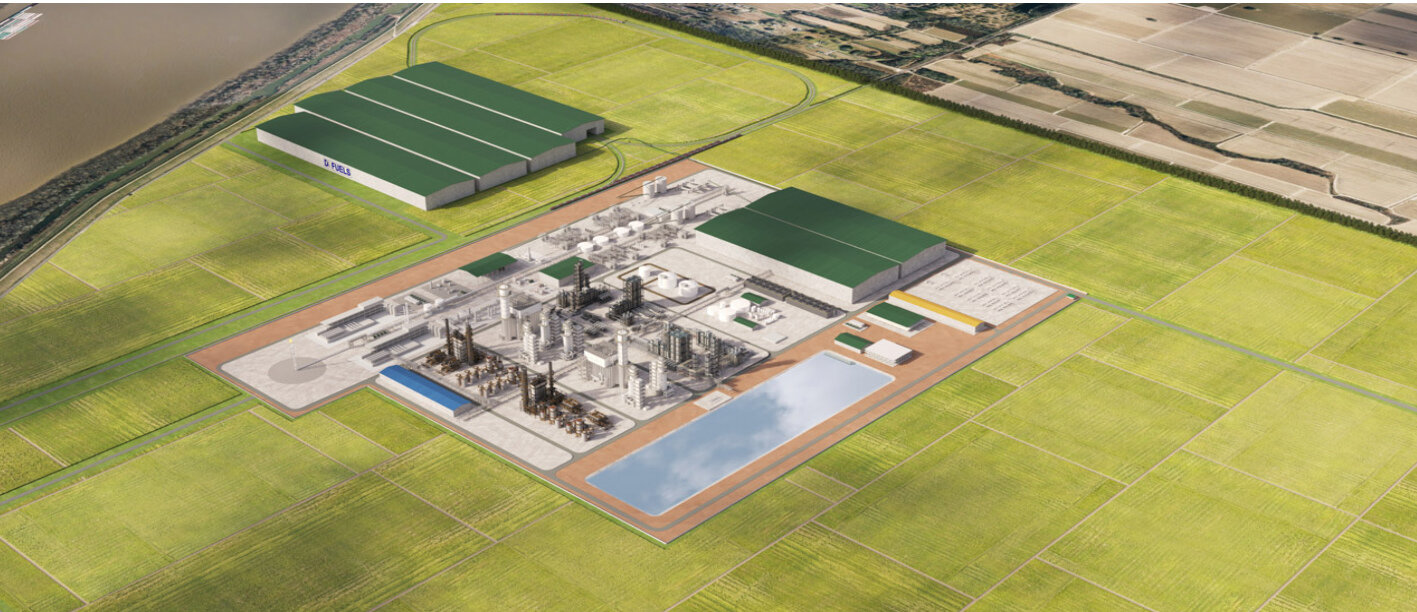DG Fuels, based in Washington, has chosen the Fischer Tropsch (FT) CANS technology, developed in collaboration by BP and Johnson Matthey, a sustainable technology manufacturer based in London, to transform bio waste from sugarcane into the newer series of sustainable aviation fuel (SAF) at a new $4 billion facility in Louisiana. in St. James Parish, Louisiana.
The facility in Louisiana aims to produce over 681 million liters of sustainable aviation fuel per year, which the group says is enough for 30,000 transatlantic flights annually. DG Fuels’ strategic plant, valued at $4 billion, is planned to create 600,000 metric tons of SAF per year after its fully operational. It might very well be the largest announced SAF production plant using a non-HEFA (hydroprocessed esters and fatty acids) method.
DG Fuels has announced that they will spend $120 million annually to purchase sugarcane waste, which is used to produce carbon monoxide, a fundamental component in the group’s production of sustainable aviation fuel. This gas is combined with blue hydrogen to create a mixture known as syngas, which can then be used through BP and Johnson Matthey’s technology to produce a type of low-emission petroleum. The FT CANS technology converts synthesis gas derived from this biomass into synthetic crude, which is further processed to produce synthetic kerosene that is blended with conventional jet fuel to produce SAF. DG Fuels plans to purchase approximately $120 million of sugarcane waste each year, a third of which is planned to be bought from farmers in St. James Parish.
Current international certification for this SAF requires a blend of up to 50 percent with fossil kerosene to create drop-in SAF. Based on a typical fuel consumption rate of wide-body aircraft traveling from London to New York, the planned SAF production capacity of the plant, after blending, equates to the fuel required for more than 30,000 transatlantic flights annually, accounting for more than 3 percent of the current annual traffic flying that route, according to the companies. “The size of this project is truly exciting and would help take the industry closer to wide-scale use of SAF,” says Maurits van Tol, Chief Technology Officer at Johnson Matthey. “DG Fuels has ambitious plans and the fact it has secured agreements with major airlines demonstrates there is appetite in the market. Our FT CANS technology enables cost-effective deployment across a wide range of project sizes.”
Similar Posts
“We are extremely excited to be moving forward with Johnson Matthey to execute our unique strategy of high carbon conversion,” says Christopher J. Chaput, President of DG Fuels. “With this technology, we will create a product that is responsibly made and can be immediately substituted for conventional aviation fuel with no engine adaptations. This partnership is a significant boost to help the aviation industry reach its climate goals.” The plant is expected to begin production in 2028. DG Fuels has already secured purchase agreements with major airlines, including multi-year contracts with Air France-KLM and Delta Air Lines. DG Fuels also has a strategic partnership with Airbus to help make SAF widely available globally.
“Our FT CANS technology solution brings together decades of science and engineering expertise from bp and JM, and this project shows its competitiveness across the range of production scales and feedstock sources the industry needs,” stated Noemie Turner, VP Technology Development & Commercialisation at bp.


















